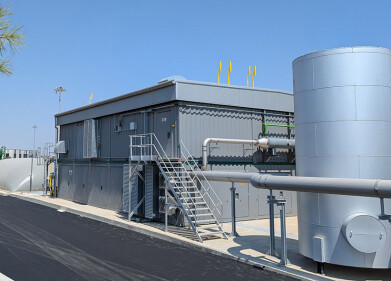Air clean up
Has Air Pollution Returned After Lockdown?
Aug 02 2020
One of the scant silver linings of the coronavirus pandemic has been the beneficial impact that lockdown measures have had on the environment. In particular, a widespread reduction in certain types of air pollution has been observed across the globe, in places as diverse as the UK and USA, India and China. However, with Britain now beginning to emerge from the most severe strictures of quarantine, there are fears that pollution levels will soon return to normal.
That’s already happening in some parts of the country, according to analysis from the University of Sheffield. Air quality researcher Rohit Chakraborty has been measuring and monitoring NOx gas emissions both during the height of lockdown and in recent weeks and has found that many cities across the UK are already reaching similar concentrations of nitrogen dioxide (NO2) as before the current crisis.
NO2 on the increase
By taking advantage of major new low-cost air quality monitoring technology, Mr Chakraborty was able to quantify the changes in NO2 levels all across the country, as well as assess fluctuations in other pollutants, too. Depressingly, several major UK cities, including Cambridge, Leeds, London, Manchester, Oxford and Sheffield all witnessed double-digit increases in NO2 concentrations in the first fortnight in June.
In Bradford, one of the worst affected areas, NO2 levels jumped up by an alarming 116% compared to the lows recorded in mid-April. Even in Mr Chakraborty’s hometown of Sheffield, a spike of 78% was recorded. “As the lockdown started easing there has been more traffic,” he explains. “With increasing traffic, we have seen NO2 levels rising gradually everywhere in the UK.”
Meanwhile, other contaminants such as particulate matter (PM), nanoparticular pollution and ozone have remained largely unaffected throughout lockdown. That’s because the agricultural industry has continued on a business-as-usual basis, with similar amounts of fertiliser and pesticide used in 2020 as in every other year.
A greener recovery
Based upon his findings, Mr Chakraborty predicts that NO2 levels will have returned to the average concentrations for this time of year within “one or two weeks”. For environmentalists seeking to highlight the drastic impact that we can have on our emissions when a concerted effort is made, that news is sure to be most unwelcome.
Indeed, many people are campaigning against a return to the status quo and a mere 9% of Britons have expressed an inclination to go back to how things were pre-lockdown. Instead, we should use the evidence of air quality over the last three months and the crossroads that quarantine has gifted us to effect real change to our daily lives and habits, transitioning to a more sustainable way of doing things.
This could take the form of more people working from home on a more regular basis, thus cutting down on commuting emissions and reducing the need to heat and light office workplaces. Moreover, the government could take this opportunity to introduce legislation aimed at encouraging walking, cycling and clean forms of public transport instead of driving, as well as reducing our energy consumption in the home.
Events
May 11 2025 Vienna, Austria
May 18 2025 Algiers, Algeria
23rd International Water Management Exhibition
May 20 2025 Prague, Czech Republic
Singapore International Water Week Spotlight 2025
Jun 23 2025 Singapore
Jun 25 2025 Sao Paulo, Brasil














